A French Polynesian Beauty
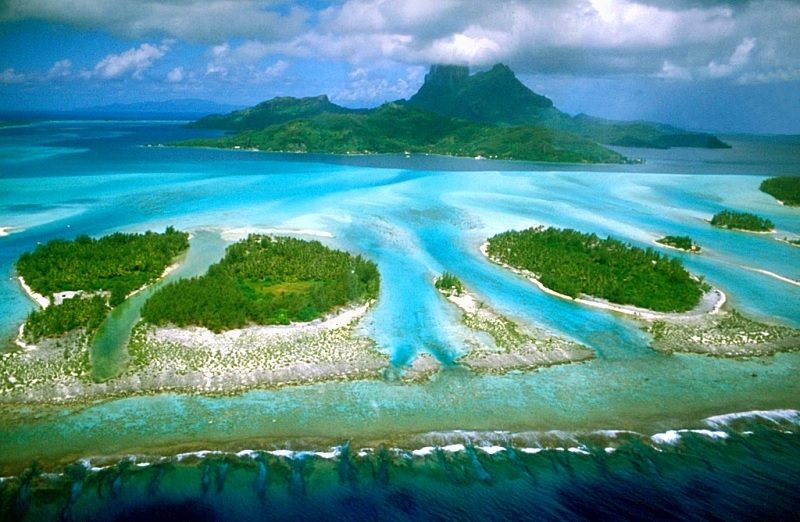
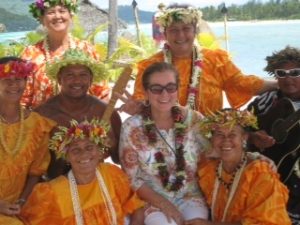 Captain Cook first sighted it more than 200 years ago. James Michener arrived as a young WWII soldier and called it “the South Pacific at its unforgettable best” and “the most beautiful island in the world.” I have always shared his awe, even after multiple visits: Clearly this is one of the planet’s most dramatically endowed islands. Although he never admitted as much, Bora-Bora must surely have been Michener’s inspiration for the mythical Bali Hai.
Captain Cook first sighted it more than 200 years ago. James Michener arrived as a young WWII soldier and called it “the South Pacific at its unforgettable best” and “the most beautiful island in the world.” I have always shared his awe, even after multiple visits: Clearly this is one of the planet’s most dramatically endowed islands. Although he never admitted as much, Bora-Bora must surely have been Michener’s inspiration for the mythical Bali Hai.
Little prepares you for the first glimpse of Bora-Bora outside your plane window when arriving from its nearby sister island of Tahiti, both part of the Society Island group—one of five such island groups that make up the country of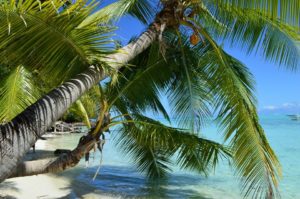 French Polynesia. Your view is of a palm-covered barrier reef of semi-connected motus (islets) that encircles a deep lagoon like a perfect string of pearls. Although it looms large in one’s fantasy, Bora Bora is only 4 miles long and 2.5 miles wide with just a single 2-lane road around it—and is surprisingly void of commercialization.
French Polynesia. Your view is of a palm-covered barrier reef of semi-connected motus (islets) that encircles a deep lagoon like a perfect string of pearls. Although it looms large in one’s fantasy, Bora Bora is only 4 miles long and 2.5 miles wide with just a single 2-lane road around it—and is surprisingly void of commercialization.
At its center looms “Tombstone” mountain, Bora Bora’s most famous landmark, which takes its nickname from its bold, quasi-rectangular shape and, at 2,379 feet, is the island’s highest peak. A four-wheel jeep will take you up into the dense vegetation-draped mountains as you jounce and rattle across the lush and bumpy terrain. It’s worth it for the cliffside views over the lagoon, and a closer look at the water’s spellbinding palette of blues and greens.
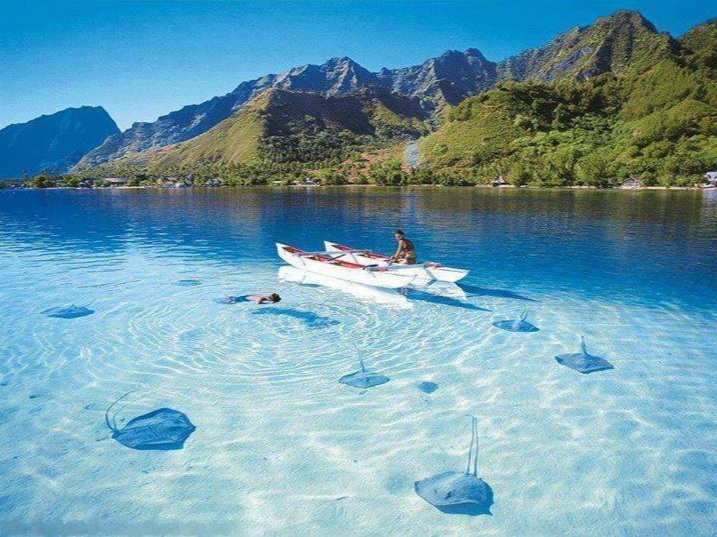
Those waters promise some of the South Pacific’s best inshore snorkeling with underwater traffic jams of trumpet fish, angelfish, and parrot fish as well as the rare Pinocchio and Napoleon fish. Shark feeding, a thrilling pastime now found elsewhere around the world, began here, and promises even more drama: Willing visitors submerge themselves amid dozens of 3-5-foot long blackfin lagoon sharks which are handfed by local divers. Massive manta rays join the flurry for leftovers and, surprisingly, a belly rub.
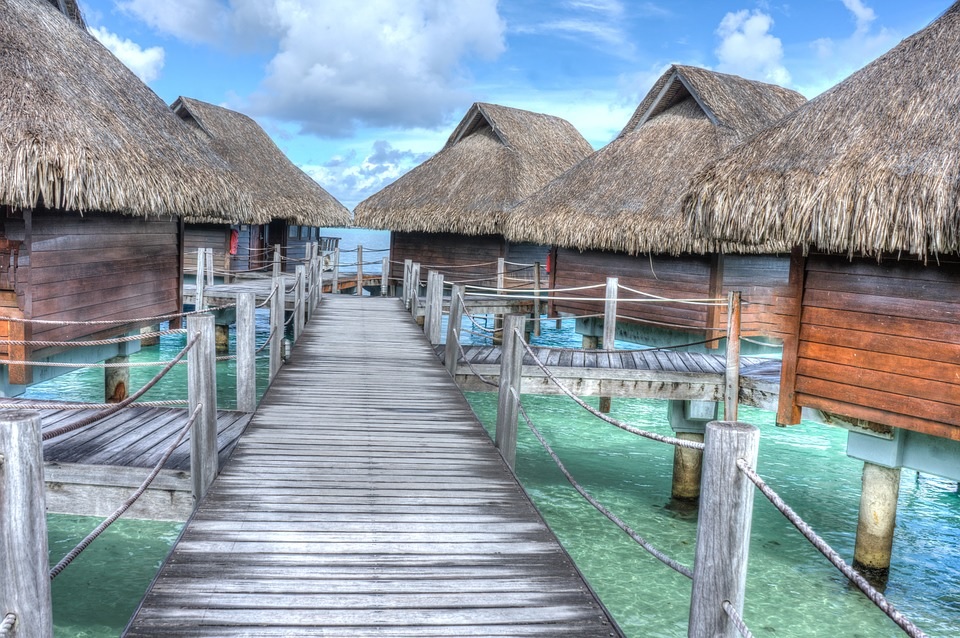
 Splurge-inclined honeymooners and those with deep pockets fill the thatch-roofed overwater bungalows, some of the first and still some of the finest in the Pacific. Colorfully dressed staff wear big open smiles and exotic flowers in their hair, and electric golf carts zip guests around expansive impeccably groomed grounds. Sprawling resorts generally include an open-air spa offering indulging treatments such as coconut and ylang-ylang scented body scrubs in breezy waterfront pavilions with a view, and a roster of water sports. But otherwise there is not much to do here (long lazy days are spent waiting for spectacular sunsets and a Bloody Mary—a cocktail whose name James Michener gave to a lovably bawdy character in his Tales of the South Pacific—required reading for anyone visiting Bora Bora), and that is very much the point.
Splurge-inclined honeymooners and those with deep pockets fill the thatch-roofed overwater bungalows, some of the first and still some of the finest in the Pacific. Colorfully dressed staff wear big open smiles and exotic flowers in their hair, and electric golf carts zip guests around expansive impeccably groomed grounds. Sprawling resorts generally include an open-air spa offering indulging treatments such as coconut and ylang-ylang scented body scrubs in breezy waterfront pavilions with a view, and a roster of water sports. But otherwise there is not much to do here (long lazy days are spent waiting for spectacular sunsets and a Bloody Mary—a cocktail whose name James Michener gave to a lovably bawdy character in his Tales of the South Pacific—required reading for anyone visiting Bora Bora), and that is very much the point.
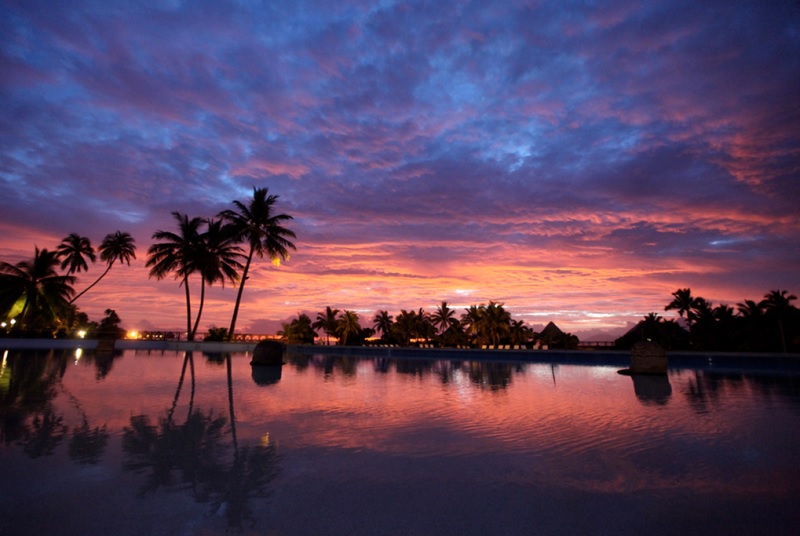
And don’t forget to check out the book!
 About the Book:
About the Book:
The world’s bestselling travel book is back in a more informative, more experiential, more budget-friendly full-color edition. A #1 New York Times bestseller, 1,000 Places reinvented the idea of travel book as both wish list and practical guide. As Newsweek wrote, it “tells you what’s beautiful, what’s fun, and what’s just unforgettable—everywhere on earth.” And now the best is better. There are 600 full-color photographs. Over 200 entirely new entries, including visits to 28 countries like Lebanon, Croatia, Estonia, and Nicaragua, that were not in the original edition. There is an emphasis on experiences: an entry covers not just Positano or Ravello, but the full 30-mile stretch along the Amalfi Coast.
Every entry from the original edition has been readdressed, rewritten, and made fuller, with more suggestions for places to stay, restaurants to visit, and festivals to check out. And throughout, the book is more budget-conscious, with starred restaurants and historic hotels such as the Ritz, but also moderately priced gems that don’t compromise on atmosphere or charm.
The world is calling. Time to answer.
Buy the Book
Amazon | B&N | Indiebound | Workman

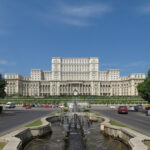
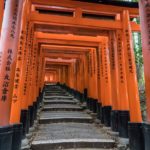
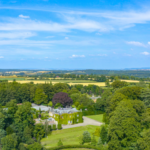
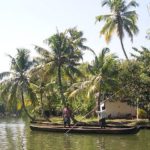
No Comments